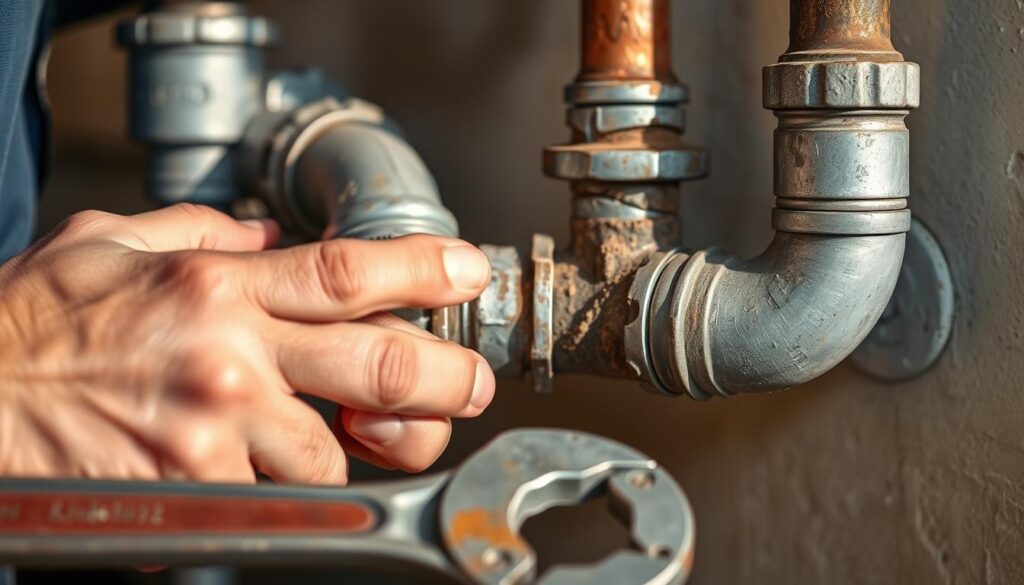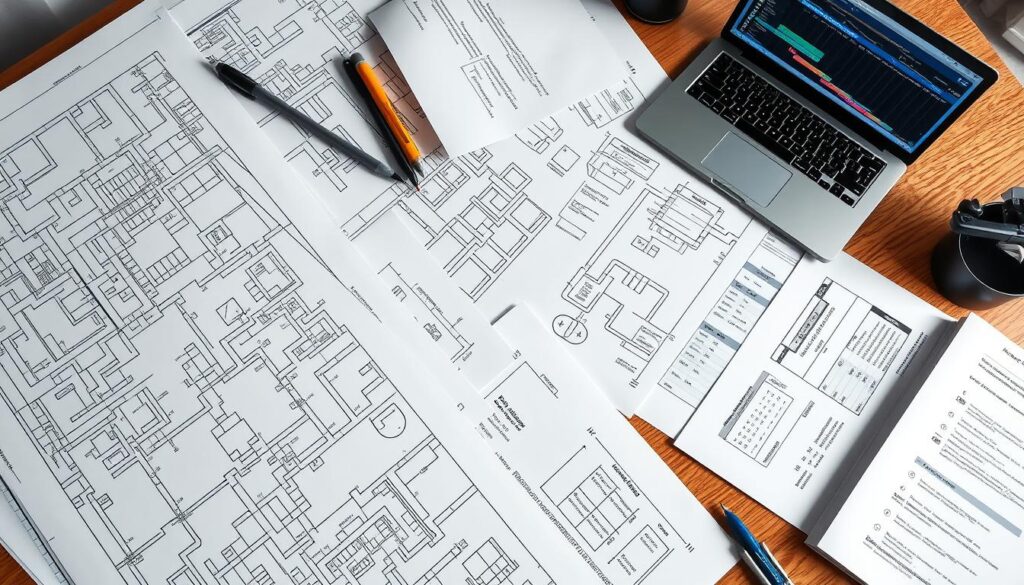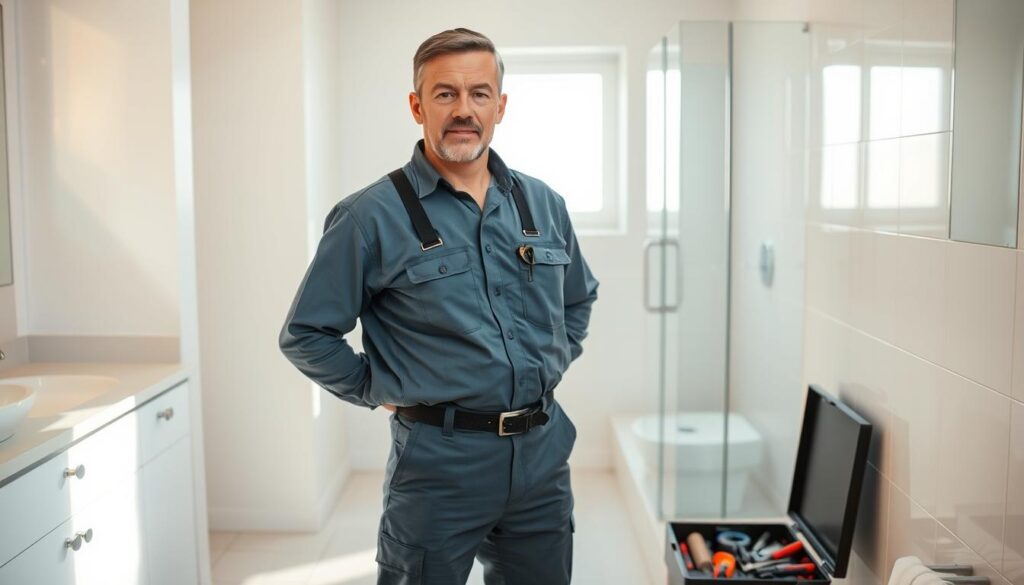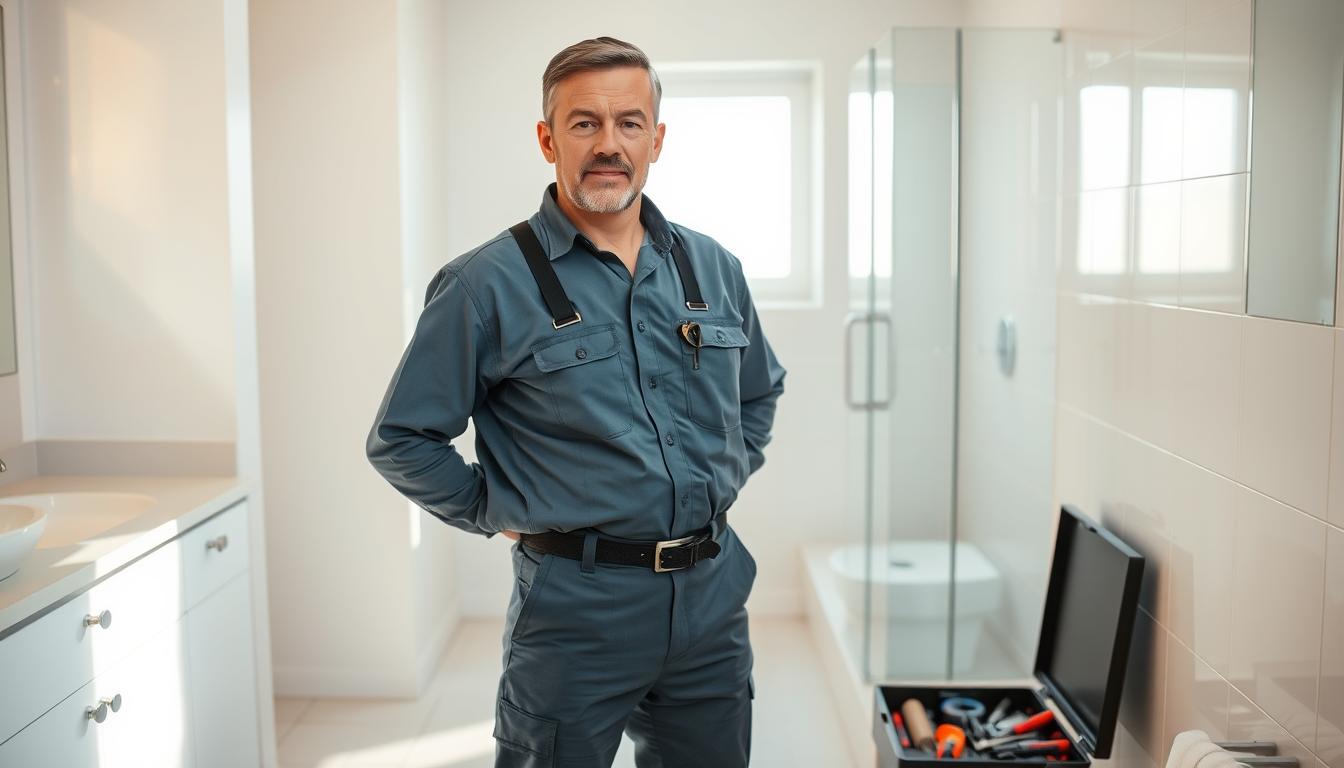Understanding the costs of replacing galvanized plumbing is key in home renovation. This replacement can be a big expense. Knowing what to expect helps homeowners make smart choices.
Plumbing costs change based on the house size and materials. It’s important for homeowners to know these costs for a successful renovation.

Replacing old galvanized plumbing is complex. But, with the right info, homeowners can feel confident. Knowing what affects plumbing costs helps plan the renovation better.
Galvanized plumbing replacement is a big part of home renovation. Knowing the costs helps avoid surprises.
Key Takeaways
- Galvanized plumbing replacement can be a significant investment in home renovation
- Plumbing costs vary depending on factors like house size and materials used
- Understanding the costs involved in galvanized plumbing replacement is crucial for informed decision-making
- Replacing outdated galvanized plumbing can be a complex process
- Homeowners should consider the costs associated with galvanized plumbing replacement for a successful home renovation
- Being aware of the factors that affect plumbing costs can help homeowners avoid unexpected surprises
Understanding Galvanized Plumbing and Why Replacement Matters
Galvanized pipes have been used in homes for many years. But, they can corrode over time. This can lead to problems with your water and plumbing system. Replacement signs like leaks, low water pressure, and discoloration mean it’s time to replace them.
Galvanized pipes are not the best choice for plumbing anymore. They can corrode from the inside, showing signs of needing to be replaced. Issues with galvanized pipes include:
- Leaks: Water leaks can happen when pipes corrode, causing water damage and higher bills.
- Low water pressure: Corroded pipes can block water flow, leading to low pressure.
- Discoloration: Corrosion can turn the water color, making it unsafe for drinking or cooking.
It’s crucial to fix these problems quickly to avoid more damage. Waiting too long can lead to worse issues, like contaminated water and structural harm. Knowing the risks of galvanized plumbing and the replacement signs helps you protect your home. It ensures a safe and reliable plumbing system.
How Much Does It Cost to Replace Galvanized Plumbing?
Replacing galvanized plumbing can be a big worry for homeowners. Plumbing replacement costs vary a lot. This depends on the house size, the type of pipes, and how complex the job is. On average, the galvanized plumbing cost can be from a few thousand dollars to over $10,000.
Here are some things that can change plumbing replacement costs:
- House size: Bigger homes need more materials and work, making the cost higher.
- Pipe material: Different pipes, like copper or PEX, cost differently.
- Job complexity: More complex plumbing systems need more work and special tools.
Remember, these costs can change based on where you live, the plumber you choose, and other things. For a better idea, talk to a professional plumber. They can look at your situation and give you a detailed quote.
Knowing what affects galvanized plumbing cost helps you prepare for the costs. Think about the benefits of new plumbing too. It can improve water quality, save water, and increase your home’s value.
Key Factors That Influence Replacement Costs
Replacing galvanized plumbing involves several key factors that affect the cost. Knowing these can help homeowners plan their budgets better. The size of your house is a big factor, as bigger homes need more materials and work.
The type of material you choose also plays a role in the cost. For instance, copper piping is pricier than PEX. Labor costs can differ based on where you live, with higher costs in areas with a higher cost of living. Lastly, how easy it is to access the plumbing can also raise the cost, especially if it’s in a hard-to-reach spot.
- House size and layout
- Material choices and prices
- Labor costs by region
- Accessibility considerations
By thinking about these factors, homeowners can better understand the costs of replacing their plumbing. This helps them make smart choices for their project.
Breaking Down the Replacement Process
The process of replacing galvanized plumbing involves several important steps. First, you need to shut off the main water supply. This step is crucial to avoid water damage during the plumbing renovation.
Next, the system must be drained to remove any water left in the pipes. This is key to prevent water damage to other parts or structures. After that, the old pipes are carefully removed without causing more damage.
A new set of pipes is installed, and the system is tested to make sure it works right. This replacement process can be complex. But, with the right help and expertise, it can be done well. It’s important to have a skilled plumber for plumbing renovation projects.
Some key steps in the replacement process include:
- Shutting off the main water supply
- Draining the system
- Removing the old pipes
- Installing new pipes
- Testing the system
By following these steps and working with a qualified plumber, you can have a successful replacement process. You’ll enjoy a modern and efficient plumbing system.
Material Options for Modern Plumbing Systems
Choosing the right material for replacing galvanized plumbing is key. Homeowners have options like copper piping, PEX piping, and other modern materials. The choice depends on budget, durability, and resistance to corrosion and freezing.
People want to know the best materials for their needs. Copper piping is popular for its durability and resistance to corrosion. But, it might cost more than other choices.
When picking a material, consider these factors:
- Cost: PEX piping is cheaper than copper but might not last as long.
- Durability: Copper piping lasts decades, while PEX piping has a shorter life.
- Resistance to corrosion and freezing: Modern plumbing materials can handle corrosion and freezing well.
In summary, the right material for replacement pipes depends on budget, durability, and resistance to corrosion and freezing. By looking at these factors and the pros and cons of each, homeowners can choose wisely based on their needs and budget.
Timeline and Project Planning Expectations
Understanding the project timeline is key for a plumbing replacement project’s success. The project’s length depends on the job’s complexity, the house size, and material and labor availability. Good plumbing renovation planning means setting a realistic timeline, budgeting, and being ready for unexpected issues.
A well-thought-out project timeline helps homeowners get ready for the renovation’s disruption. It’s important to work with a skilled plumber who can give a detailed schedule and updates. This way, homeowners can plan better and reduce the renovation’s impact on their daily lives.
When planning a plumbing renovation planning timeline, consider these factors:
- Assess the job’s complexity and needed materials
- Coordinate with contractors and suppliers for timely material delivery
- Be ready for any delays or issues that might come up
Knowing the project timeline and being ready for the renovation ensures a smooth plumbing renovation planning experience. It’s crucial to work with a trusted and experienced plumber who can guide and support you through the project.

Hidden Costs and Potential Complications
When you replace galvanized plumbing, think about the hidden costs that might pop up. These can come from wall and floor repairs, permit requirements, and finding other plumbing issues.
Removing old pipes or putting in new ones can damage walls and floors. This might mean extra money for repairs. Also, permit requirements can increase costs. Getting the right permits is key for a job done right.
Here are some things to keep in mind for hidden costs and plumbing complications:
- Wall and floor repair costs
- Permit fees and requirements
- Potential system updates or repairs
Knowing about these hidden costs and plumbing complications helps homeowners plan better. This way, they can budget for their galvanized plumbing replacement project. It makes the whole process smoother and more successful.
Choosing and Working with a Qualified Plumber
Choosing the right qualified plumber is key for a smooth plumbing replacement. A skilled plumbing contractor makes sure the job is done right and fast.
To find a trustworthy plumbing contractor, start by researching online. Look for reviews, ask for references, and check their licenses. You can also get tips from friends and family.
Here are some tips for working with a qualified plumber:
- Get quotes from different contractors to compare prices and services
- Make sure the contractor is licensed and insured
- Ask about their experience and how they plan to do the work

By following these tips and choosing a qualified plumber, your plumbing project will be done well and with less stress.
Conclusion: Making an Informed Decision About Your Plumbing Replacement
Replacing galvanized plumbing is a big step, but it’s worth it in the long run. You now know how to make a smart choice for your home. This choice should fit your budget and meet your needs.
Think about your home’s size, layout, and how easy it is to get to. These things affect the cost. Compare the costs of modern materials like copper and PEX. Also, a good plumber can make the process easier.
Upgrading your plumbing is more than fixing current problems. It’s about making your home better for the future. New pipes can increase your home’s value and improve water quality. They might also save you money on repairs later.
Take your time to look at all your options. If you need help, ask a professional. With the right info and planning, you’ll make a choice that benefits your home and family for years.
FAQ
What is the average cost to replace galvanized plumbing?
Replacing galvanized plumbing can cost between $4,000 and $15,000 or more. This depends on your home’s size, the type of pipes, and the job’s complexity.
What are the signs that my galvanized pipes need to be replaced?
Signs your pipes need replacing include low water pressure, discolored water, leaks, and visible rust or corrosion.
How do I choose the right material for my plumbing replacement?
Choosing the right material depends on cost, durability, and resistance to corrosion and freezing. Copper and PEX are good options, each with benefits.
How long does a plumbing replacement project typically take?
Plumbing replacement projects usually take 3 to 10 days. This depends on your home’s size and the job’s complexity.
What hidden costs or complications should I be aware of?
Hidden costs include wall and floor repairs, permit needs, and finding other system issues. These may require more updates or repairs.
How do I choose a qualified plumber for my replacement project?
Choose a plumber by researching their credentials, reading reviews, and asking for references. Make sure to communicate well and understand the contract and warranty.
